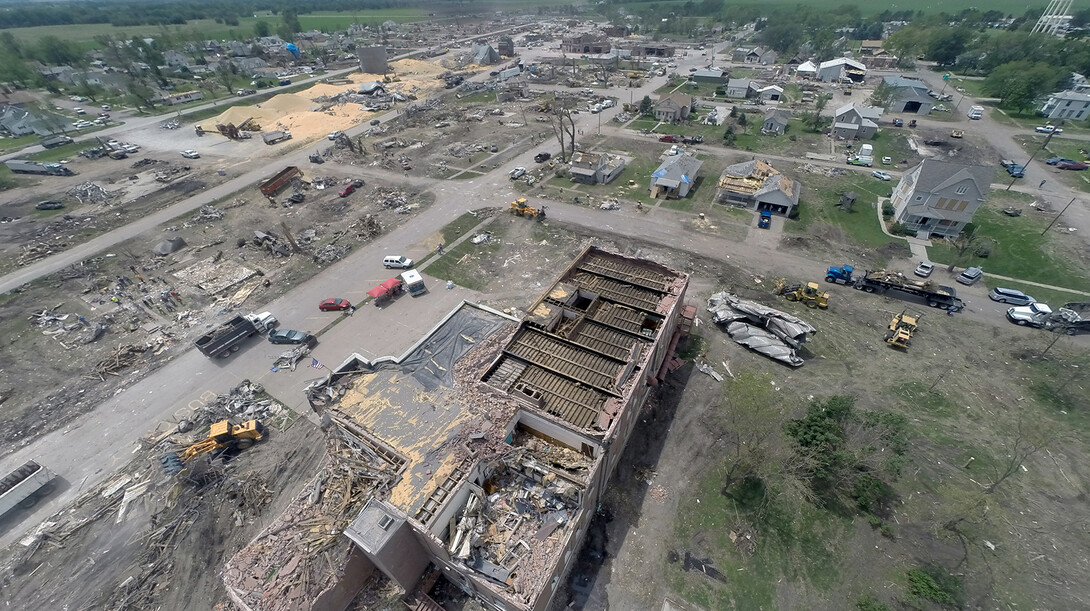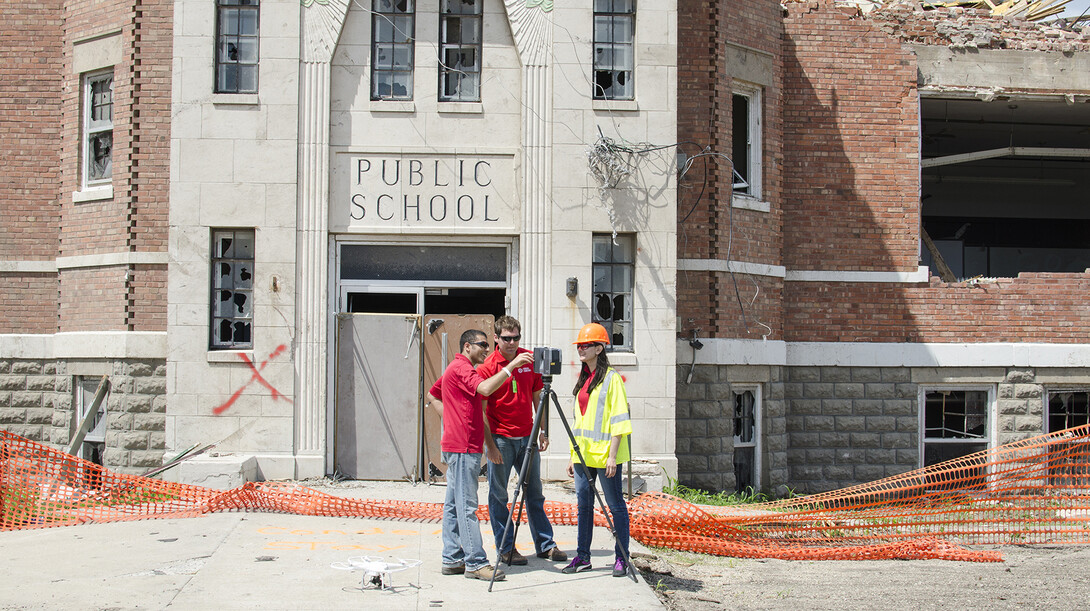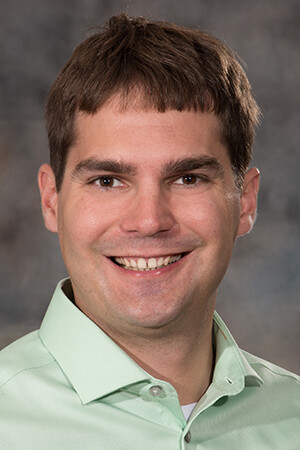
Using a high-tech laser scanner and a drone, a University of Nebraska-Lincoln civil engineering professor and his graduate students analyzed the wreckage after a tornado ripped through the town of Pilger, Neb., nearly a year ago.
The tornado killed two people, injured 20 and destroyed dozens of homes and buildings, including St. John Lutheran Church. The Wisner-Pilger Middle School building was damaged beyond repair.
Just days after the storm, assistant professor Richard Wood and graduate student Gulipiye Abudukadier made the first of three trips to Pilger to study the damage. They were joined by doctoral student Ebrahim Mohammadi on the third visit.
Their mission: to detect where engineering fell short, leaving key buildings vulnerable to the tornado’s punishing winds; and to develop computer algorithms for remotely detecting structural damage caused by tornadoes, earthquakes and other events.
“By doing this, we can examine the exterior of the structure, and in specific cases, its interior, from afar,” Wood said. “It provides safety to the inspectors and allows for an electronic collection of data for use by others.”
Wood studied earthquake damage in California before joining UNL in 2013. His trip to Pilger was his first foray into studying tornado damage.
Wood and the students examined six sites, the middle school most prominent among them. Using data collected from a LiDAR (Light Detecting and Ranging) 3D scanner and photogrammetry from a camera-equipped tethered drone, they created a point-cloud model of the school building.
The model, which appears as a 3D image of the school building that can be rotated to different angles on the screen, helped them identify how the building was damaged by the storm.
Their soon-to-be completed report will be provided to the school district and posted to UNL’s Digital Commons, an open-access online repository of academic papers and similar materials.
“It is data mining,” Wood said. “We assemble millions of data points and look for changes in the surface geometry to detect damage. We’re statistically determining the potential quantity of damage, and the whole point is to do it in terms of minutes, not hours.”
Some of their preliminary findings:
- Unreinforced masonry appears particularly vulnerable to tornado damage. The middle school, the Midwest Bank building and the Minnick Funeral Home all were damaged in this way.
“Though it’s very common here in the Midwest, unreinforced masonry does not hold up well to the lateral forces of a tornado,” Wood said. “The masonry units are able to move independently and are very susceptible to collapse under lateral loads.”
Engineers are researching ways to retrofit masonry buildings to make them less susceptible to tornado damage, but have yet to find a cost-effective solution, he said.
- Broken windows were the most common damage. Though broken windows are unavoidable, using glass treated with a shatter-reducing film could reduce the amount of damage they cause.
“The last thing you want is shards of glass everywhere — and it was everywhere in the school,” Wood said.
Several buildings, including the school and St. John’s Church, were damaged after the rupture of steel anchors that connected them to their substructure. The church was completely demolished, only its bell tower left standing.
- Anchor and rivet failure led to steel grain bins being ripped from their foundations. A flying steel bin struck the school, collapsing its southeast corner. “The grain bins became aerial missiles, with a velocity of about 180 miles per hour, “ he said. “This is an extreme structural load that most buildings are not designed to resist.”










